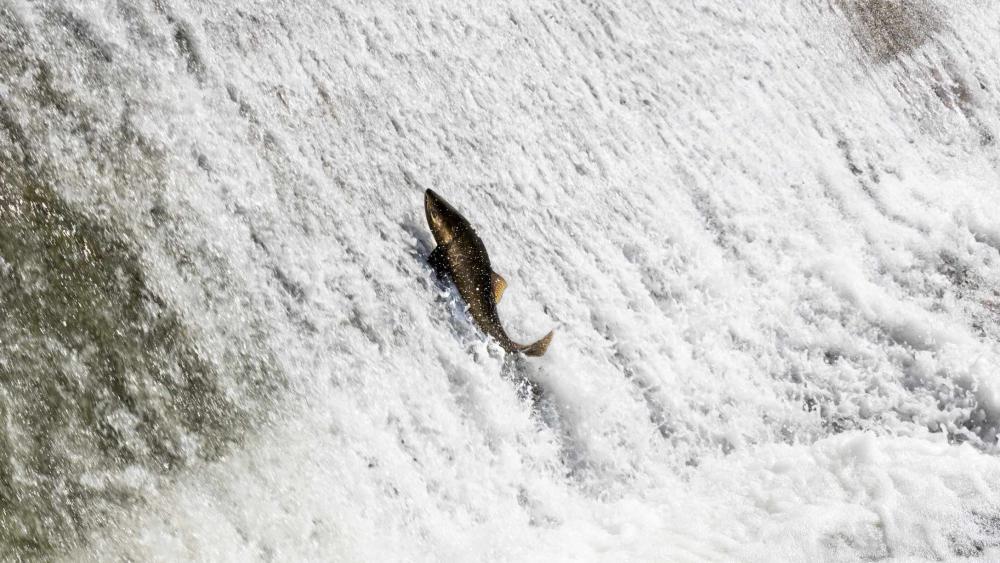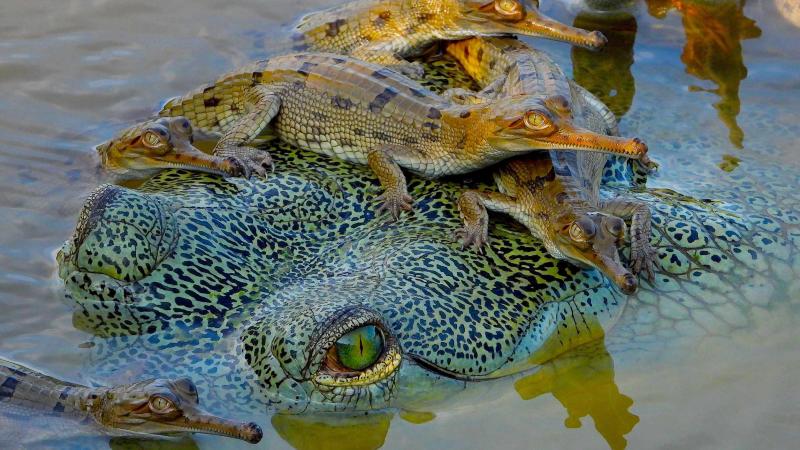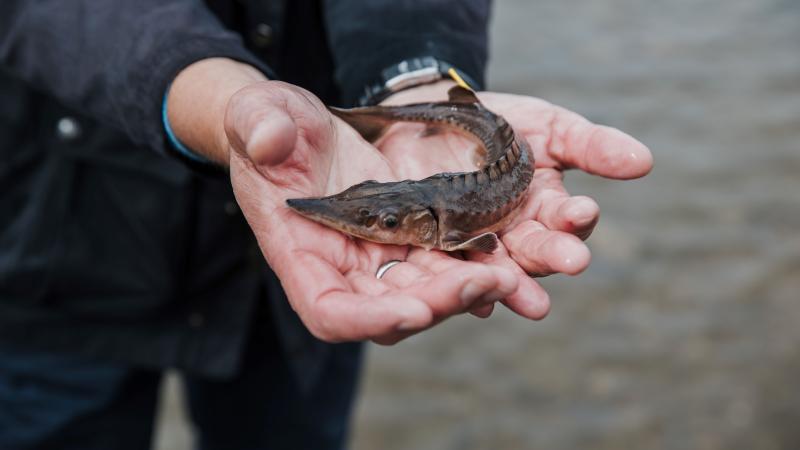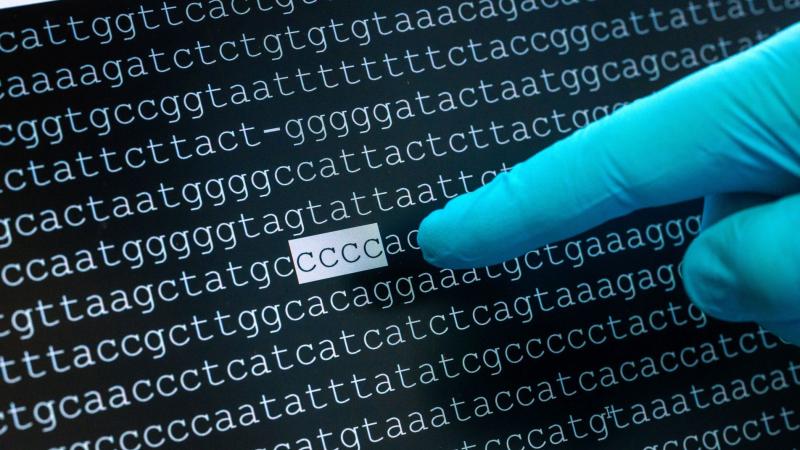
Example photo: Many fish fail at hydropower plants, around one in five die when passing through the turbines. | Photo: shutterstock 2525484043 © elshootsphotography
Rivers have been fragmented globally with over 2800 reservoirs with a surface area over 10 square kilometres. Many of these big reservoirs are associated with large hydropower plants, while small hydropower plants often do not form a big reservoir and have gone unchecked. It is estimated that more than 80,000 small hydropower plants are operating or under construction worldwide, and the numbers continue to grow. Many of these existing and planned facilities are located in freshwater biodiversity hotspots, including the Amazon, Congo, Ganges, and Mekong basins. “We see very different types of hydropower plants and varying developments across regions," said Prof. Sonja Jähnig, researcher at IGB and the last author of the study published in Nature Reviews Earth & Environment. "In Germany, the Alpine region, and generally across Europe, smaller hydropower plants dominate. While many of them contribute little to the energy generation, they profoundly disrupt river ecosystems. Rivers in Asia and South America, which are home to high levels of biological diversity and many migratory species, are also subject to growing threat from hydropower development." According to the International Union for Conservation of Nature’s (IUCN) Red List of Threatened Species, dams have posed a threat to nearly 4,000 aquatic, semi-aquatic, and terrestrial species. This widespread risk results from a variety of negative impacts associated with dam construction. The loss of river connectivity plays a critical role here.
Fragmented lifelines and disrupted migration routes of aquatic species
River connectivity encompasses multiple dimensions: the three spatial dimensions—longitudinal connectivity along river network, lateral connections to floodplains, and the vertical exchanges with groundwater and the atmosphere. In addition, there is the temporal dimension regarding natural regimes of flow, sediment, and water temperature in river ecosystem.
“Hydropower development alters river connectivity in all four dimensions and poses various impacts on biodiversity, including habitat loss caused by impoundment, impeded species migration, increased injuries and mortality caused by turbines or hydropeaking effects.” explained Prof. Fengzhi He from the Northeast Institute of Geography and Agroecology, Chinese Academy of Sciences, who has led these two studies and is a guest scientist at IGB.
Hydropower impacts on aquatic species such as fish have been widely documented, with migratory fish being particularly affected. Globally, monitored populations of migratory freshwater fish declined by an average of 81 percent between 1970 and 2020, with damming among the leading causes. Dams not only inhibit these animals from completing their life cycles and lead to increased injury or mortality rates when they pass through hydropower infrastructure. Indeed, another IGB study based on data from 122 hydropower plants revealed that about one in five fish died or were severely injured while migrating downstream through turbines—a risk that would increase when multiple hydropower plants exist along a river. Although fish passes have been installed for many hydropower plants to facilitate fish movement and reduce mortality, their overall effectiveness is often limited.
Interrupted water flow: Disruptions to flow and temperature regimes
Hydropower plants can fundamentally alter environmental conditions both upstream and downstream through impoundment and intermittent water release. In the reservoirs, lotic species that are adapted to flowing water often disappear while generalist species, including some non-native species, can thrive in the impounded river sections. River sections downstream of hydropower plants often experience rapid water-level fluctuations due to intermittent water release, which can lead to increased injuries and mortality of aquatic species. Water release of hydropower pants also modifies natural thermal regimes in the downstream river channel. For example, when water is released from the deep part of reservoirs, downstream river sections can experience cooling in summer and warming in winter, reducing natural seasonal temperature variation. The altered flow and temperature regimes create mismatches between species’ life cycles and environmental conditions. In the Yangtze River, the spawning period of four major carp species has been delayed and shortened downstream of the Three Gorges Dam, causing a nearly 90 percent decline in annual fry of these species.
More research and monitoring schemes needed for assessing hydropower impacts on semi-aquatic animals
“Compared to aquatic species, much less attention has been paid to hydropower impacts on semi-aquatic animals such as crocodylians, turtles, and otters. The lack of reports does not mean that these semi-aquatic animals are not influence by hydropower development” said Vassil Altanov, who has completed his master thesis at IGB and the is the first author of the study published in Biological Conservation. “We used semi-aquatic megafauna that can reach a maximum body mass of 30 kg as examples to show hydropower impacts on semi-aquatic animals”.
The creation of reservoirs can increase surface water areas and the length of shorelines. However, this increase does not necessarily equate to enhanced habitat quality for semi-aquatic animals. For instance, at the Balbina Dam in Brazil, the water surface increased 63-fold, yet the giant otter (Pteronura brasiliensis) population only doubled due to reduced food availability and the loss of suitable denning habitats. In addition, nesting sites of crocodylians and turtles can be inundated by reservoirs upstream of the dam or flooded by raised water levels downstream of the dam due to water release during nesting seasons, posing negative impacts on their reproduction. Moreover, sediment retention in reservoirs and frequent water-level fluctuations increase downstream channel incision, which gradually degrades essential habitats, such as sand beaches, for turtles and crocodylians.
Semi-aquatic mammals are also vulnerable to altered environmental regimes by hydropower plants. For instance, the flow regime in downstream areas of Kafue Gorge Hydroelectric Scheme was altered, which affected the growth of plant species in the downstream floodplain. It reduced food availability for the Kafue lechwe (Kobus leche ssp. kafuensis) during its mating and calving periods. Such changes forced the Kafue lechwe to shift the timing of mating and calving activities to survive.
Negative effects accumulate and intensify
When multiple hydropower plants exist along a river, their negative impacts on the environment and biodiversity accumulate. “This is particularly of concern because over 3,000 hydropower plants, each with an installed capacity of more than one megawatt, are currently planned or under construction, while more than 4,600 locations have been identified as potentially profitable sites for hydropower development. Many of these locations are in protected areas. To put it bluntly: hydropower plants always have negative impacts on rivers. Where they already exist, their harmful effects must be better mitigated,” said Prof. Sonja Jähnig.
The authors highlight measures to mitigate these impacts, such as implementing environmental flow to stimulate functional elements of natural flow regimes and designing effective passages to enhance upstream and downstream movement of species. They proposed the STREAM framework to help balance energy generation and sustaining biodiversity, including Systematic planning for renewable energy infrastructure, Tracking hydropower impacts through long-term monitoring and research schemes, Responsive adaptive management strategies, Elimination of hydropower infrastructure where necessary, Assessment of socio-ecological trade-offs, and Multi-actor decision-making.








